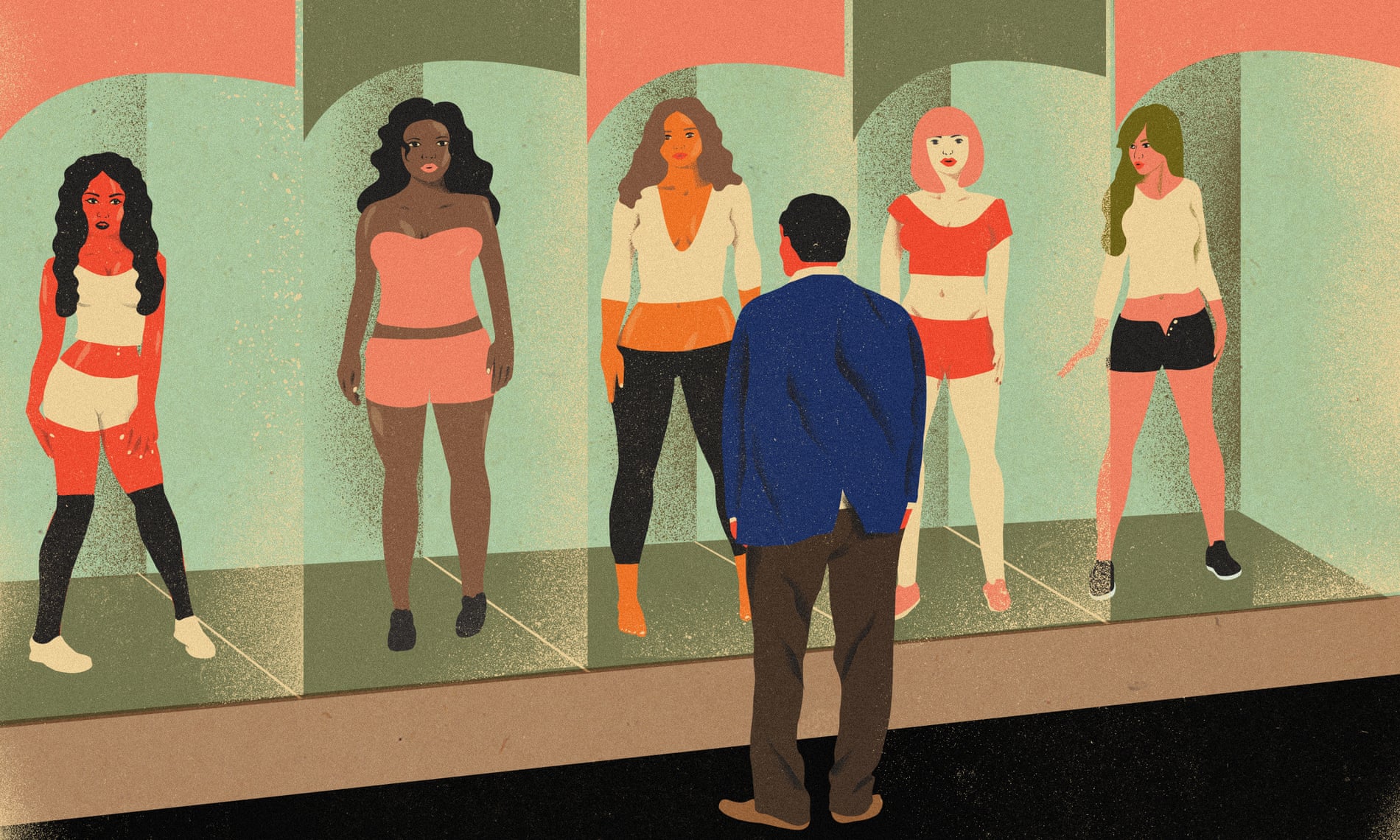by TRACY CLARK-FLORY

If we look at it closely and with compassion, male desire is more complicated than most people assume it to be
As I took in the rows of heads mounted on the wall, my first impression was that I’d stepped into a hunting lodge – only these trophies bore a high-sheen of lip gloss and teased hair. Their static eyes trained on a middle distance, save for one pair, set in an Angelina Jolie-lookalike face, that seemed to be staring right at me. I smiled awkwardly, as if to say “hello”, then quickly stepped away from its lifeless gaze.
I was in the lobby of the sex doll manufacturer RealDoll, beside a pair of busty life-size models propped up by metal stands. This was about what I expected from my visit to the company’s San Diego headquarters: improbable physiques incapable of standing on their own.
As a teenager in the late 1990s, I’d snuck nighttime episodes of HBO’s edgy documentary series Real Sex and caught one featuring RealDoll’s founder, Matt McMullen, and his factory of fantasy. RealDoll offered sculpted silicone perfection, Barbie-like proportions, and lips parted as if in a perpetual moan. Fourteen-year-old me watched McMullen confidently state: “We can build your dream girl for you.” This is what straight men desire, I thought.
Nearly two decades later, my visit as a reporter to the RealDoll headquarters felt like a personal pilgrimage. It was January of 2017 and Donald Trump had just been sworn into office after bragging about his ability to “grab” women by the “pussy”. It seemed to me that the market for these inanimate bodies was a reflection of a similar kind of sexual entitlement and blithe objectification of women. RealDoll primarily sells quote-unquote “female” dolls to men, with its “male” models accounting for only 10% of its sales. Annually, the company sells roughly 350 to 400 dolls starting at around $6,000 a piece.
But then my tour guide, a woman with warm eyes and a kind smile, caught me off guard. Sometimes, she said, customers request bespoke faces based on the countenance of a deceased spouse. She promptly waved me on, but I paused in place, gazing at the heads. Grieving widowers was not something I expected to find here. Maybe I should have known better.
The Guardian for more
